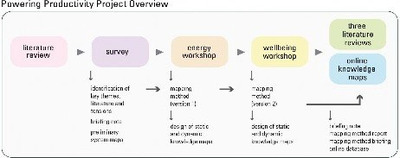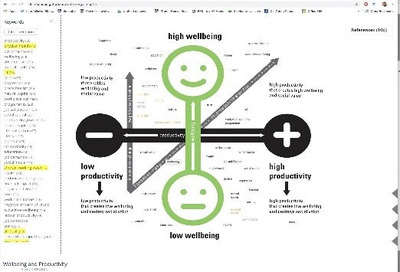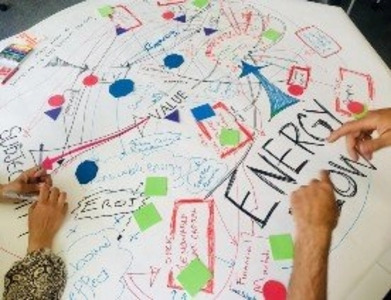Case Study: Mapping productivity, energy and well-being
Boehnert, Joanna and Mair, Simon (2021) Case Study: Mapping productivity, energy and well-being. In: Proceedings of Relating Systems Thinking and Design (RSD10) 2021 Symposium, 2-6 Nov 2021, Delft, The Netherlands.
![Boehnert_Fig1_2021.png [thumbnail of Boehnert_Fig1_2021.png]](https://openresearch.ocadu.ca/3829/1.hassmallThumbnailVersion/Boehnert_Fig1_2021.png)  Preview |
Image
Boehnert_Fig1_2021.png Available under License Creative Commons Attribution Non-commercial No Derivatives. Download (59kB) | Preview |
![Boehnert_Fig2_2021.png [thumbnail of Boehnert_Fig2_2021.png]](https://openresearch.ocadu.ca/3829/2.hassmallThumbnailVersion/Boehnert_Fig2_2021.png)  Preview |
Image
Boehnert_Fig2_2021.png Available under License Creative Commons Attribution Non-commercial No Derivatives. Download (144kB) | Preview |
![Boehnert_Fig3_2021.png [thumbnail of Boehnert_Fig3_2021.png]](https://openresearch.ocadu.ca/3829/3.hassmallThumbnailVersion/Boehnert_Fig3_2021.png)  Preview |
Image
Boehnert_Fig3_2021.png Available under License Creative Commons Attribution Non-commercial No Derivatives. Download (145kB) | Preview |
![Boehnert_Fig4_2021.png [thumbnail of Boehnert_Fig4_2021.png]](https://openresearch.ocadu.ca/3829/4.hassmallThumbnailVersion/Boehnert_Fig4_2021.png)  Preview |
Image
Boehnert_Fig4_2021.png Available under License Creative Commons Attribution Non-commercial No Derivatives. Download (144kB) | Preview |
![Boehnert_Fig5_2021.png [thumbnail of Boehnert_Fig5_2021.png]](https://openresearch.ocadu.ca/3829/5.hassmallThumbnailVersion/Boehnert_Fig5_2021.png)  Preview |
Image
Boehnert_Fig5_2021.png Available under License Creative Commons Attribution Non-commercial No Derivatives. Download (122kB) | Preview |
Abstract
The case study describes Powering Productivity, a research project funded by the Economic and Social Research Council (UK) that mapped links between energy and productivity, and then wellbeing and productivity. The relationships between productivity, energy and wellbeing are complex and span a variety of disciplines.
Productivity is primarily constructed and used by economists as a measure of the productive capacity of an economy (how much can we produce for a given set of inputs). It deals with market activity measured in monetary terms. Wellbeing is a more interdisciplinary term that is constructed and used from economic, sociological, or psychological viewpoints. Unlike both labour productivity and wellbeing, energy is primarily a physical concept constructed and used by engineers and natural scientists. Communicating across all these different domains with distinct disciplinary vocabularies, assumptions, ontologies and priorities is difficult.
The research design enabled an expansive overview of the drivers of productivity (see figure 1).
We designed a research process around two workshops that facilitated interdisciplinary investigations. Participants were principally academic energy specialists, economists and psychologists. We employed a variety of systemic design mapping methods including participatory gigamapping. Visual strategies were used to bridge disciplinary silos mapping relationships, dynamics and tensions across knowledge traditions. The participatory system mapping facilitated knowledge exchange across disciplines.
Powering Productivity research process
Two parallel research projects were conducted, each with its own mapping workshop: 1) Energy and Productivity and 2) Wellbeing and Productivity. The research design consisted of a combination of two thematic literature reviews with two participatory systems mapping workshops with subject experts.
The information gathering and co-production activities were followed by the development of two topic reports/literature reviews and the design of interactive knowledge maps (all three reports are available at cusp.ac.uk/projects/powering-productivity)
Energy and Productivity
Wellbeing and Productivity
Powering Productivity – Mapping Method Report
The participatory processes began with questionnaires sent to subject experts to identify key themes, literature and research groups.
This process informed the development of two knowledge maps published online as interactive digital visualisations linked to a database of the literature review.
This project combined a participatory system mapping elicitation phase (with the workshops) and a knowledge mapping representation phase (post-workshops). Gigamapping was used within two workshops as a basis for the development of two static knowledge maps and the design of two online interactive knowledge maps with links to the literature database (Figures 2 and 3). With this method, new knowledge generated at the workshops was captured for the development of interactive maps online linking to the text referenced in the literature reviews. This work can be accessed on the project website including 1) an Energy-Productivity Map and 2) a Wellbeing Productivity Map.
Research process
The research process integrated the thematic literature reviews and mapping workshops in two ways. First, preliminary literature searches (partially based on the surveys) were used to produce briefing notes which framed initial discussions. Both briefing notes followed the same structure: identifying a number of core themes (12 in the energy project and 9 in the wellbeing project), summarising key arguments, providing indicative references and raising questions for discussion.
Secondly, the maps and discussions at the workshops were used to guide subsequent stages of literature search and report development. Workshops were facilitated by design facilitators, leaving the literature review research group free to take notes and participate in map construction. At each workshop, the two literature review authors participated in the mapping process. Each was in a different mapping group to ensure coverage of all discussions. There were two groups of 4-6 people working on two different maps in each workshop. This provided a level of immersion in the mapping process which contributed to the co-production and helped to ensure the mapping process influenced the literature reviews.
Workshops
The energy workshop was characterised by debate emerging from divergent perspectives of different workshop participants, which led to broad philosophical discussions. As a starting point, the energy workshop’s focal questions were technical. For example, how is energy used in the production process? Are capital and energy complements or substitutes? However, these discussions were undercut by philosophical debates, such as ‘how do subjective factors influence technical relationships?’ Ultimately, many issues resulted in the same question: ‘what is value?’ and ‘how does the construction of value change relationships in energy – productivity nexus?’
The well-being workshop had more of a shared understanding of the subject matter amongst participants (Figures 4 and 5). The discussions were more focused on identifying the well-being implications and relationships to low to high productivity growth. Nonetheless, the well-being workshop also facilitated fairly fundamental discussions. Here participants focussed on problematising the potential relationship between wellbeing and productivity. Figures 11 and 12 show that participants highlighted that both a positive and negative relationship between wellbeing and productivity was possible. Participants then proposed alternative normative visions for future pathways. Discussions were narrower. This focus gave the wellbeing-productivity mapping process greater depth – and enabled the mapping processes to feed more easily into a review process because the story the Productivity-Wellbeing Map told was more evident.
Report
The methods are described in detail in the Mapping Methods Report. See: Boehnert J., Mair, S., & Landa-Avila, C. (2020). Mapping Method Report – Exploring the Links between Energy, Wellbeing and Productivity. Guildford, UK: University of Surrey, 2020. Available at cusp.ac.uk/projects/powering-productivity)
| Item Type: | Conference/Workshop Item (Other) |
|---|---|
| Divisions: | Faculty of Design |
| Related URLs: | |
| Date Deposited: | 27 May 2022 13:22 |
| Last Modified: | 27 May 2022 13:22 |
| URI: | https://openresearch.ocadu.ca/id/eprint/3829 |
Actions (login required)
 |
Edit View |

 Lists
Lists Lists
Lists